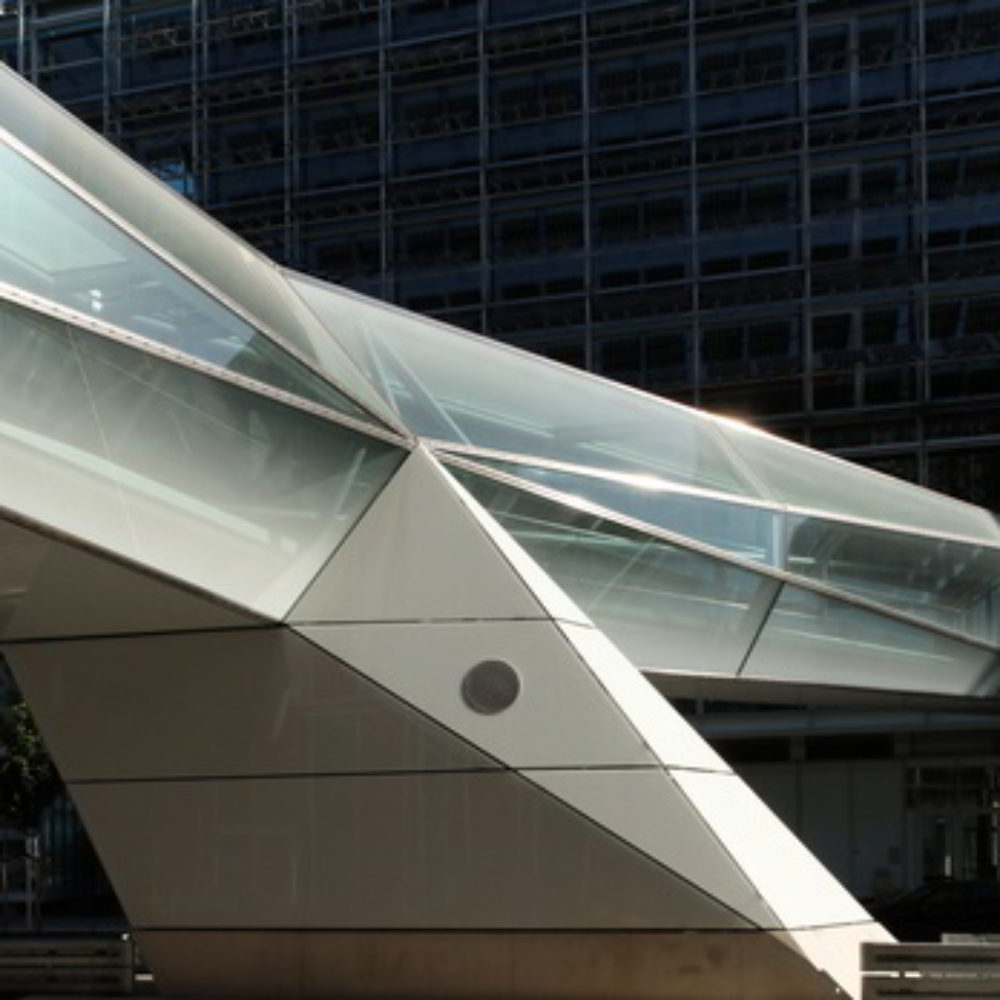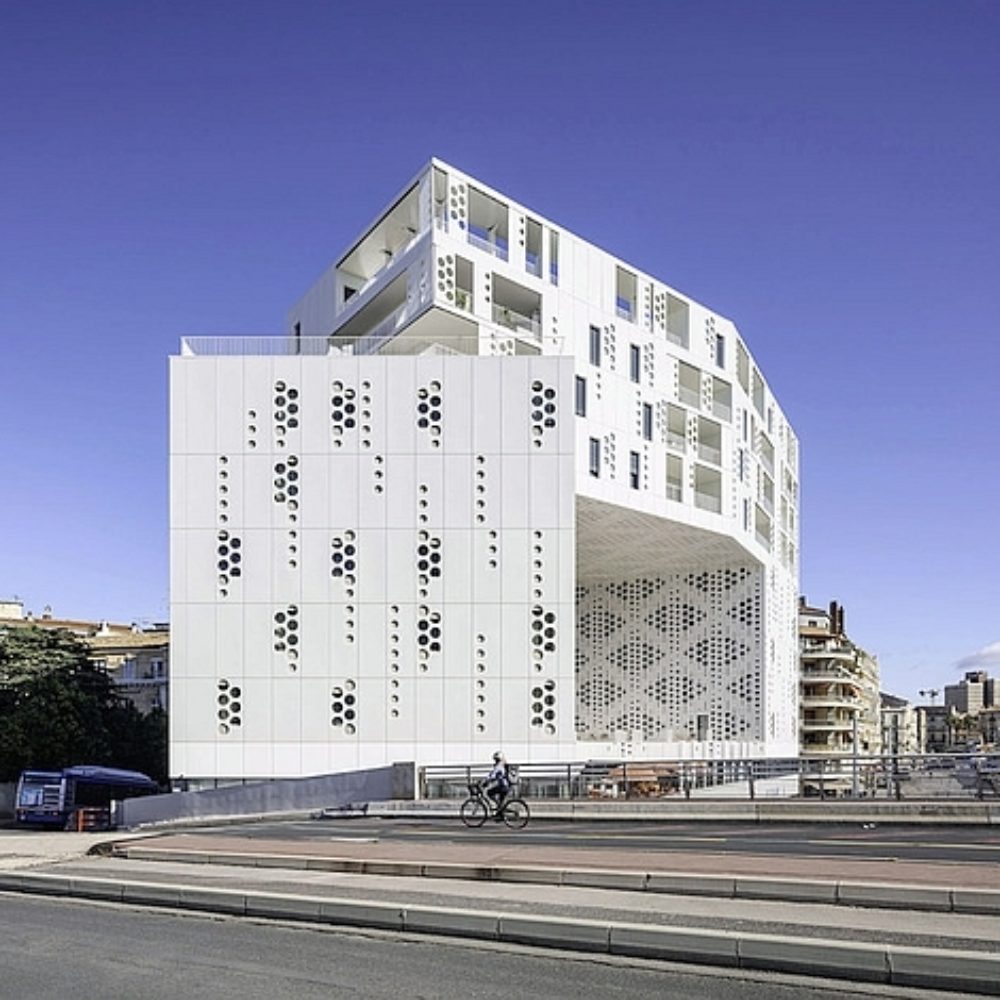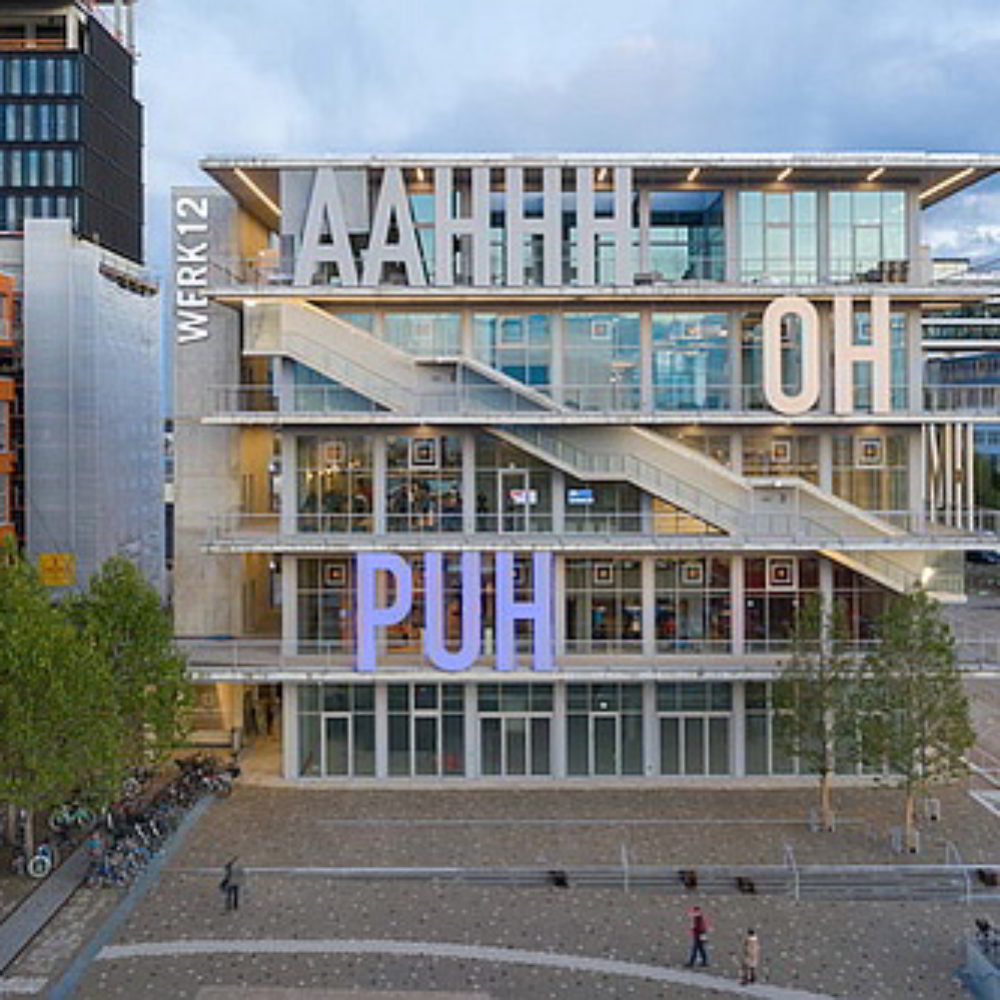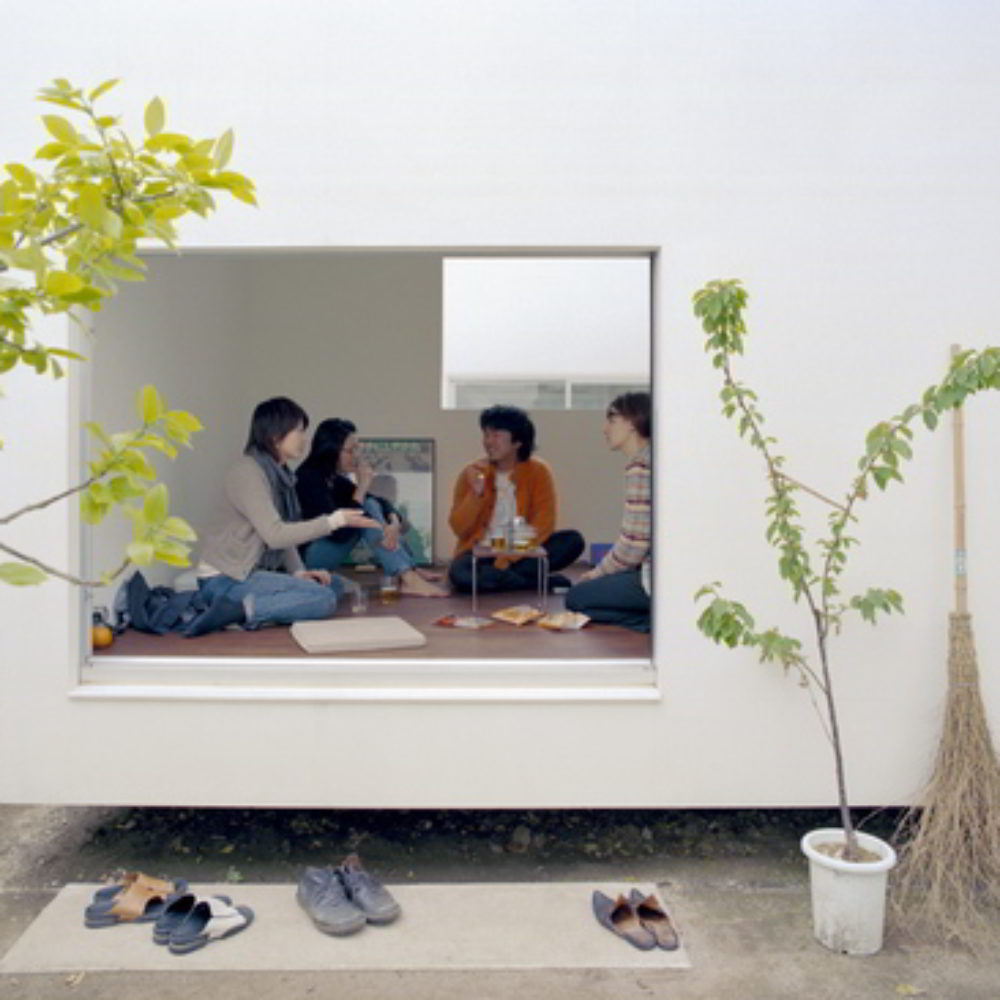Das World Architecture Festival (WAF), größtes internationales Architekturpreis-Programm, findet vom 1. bis 3. Dezember in Lissabon statt. Diesjähriges Thema ist Resetting the City: Greening, Health and Urbanism. Das Publikum erwartet pure Inspiration: drei Tage und vier Nächte am Fluss Tajo mit einem reichen Angebot von Konferenzen, Vorträgen, Seminaren, Live-Besprechungen und Auszeichnungen.
11. September 2021 | Özlem Özdemir
D
as World Architecture Festival hat – lang ersehnt – die Auswahlliste für 2021 veröffentlicht. Mit ihr werden rund 200 Gebäude und Landschaftsprojekte ausgezeichnet, die im Zeitraum 2019 bis 2021 entstanden sind. Die Palette umfasst diverse Typologien wie Geschäfts-, Wohn- und Kulturprojekte. Architekturbüros aus 55 Nationen haben 732 Projekte eingereicht. Zum Vergleich: Im Jahr 2016 waren es für WAF Berlin 42 Länder und 343 Projekte.
Das WAF ist eine Veranstaltung der Superlative. Dazu gehört auch die internationale Jury: 154 Personen aus über 70 Ländern sind am Auswahlprozess beteiligt. Manche von ihnen waren schon in vorherigen Jahren in das WAF-Geschehen involviert. So etwa die praktizierenden Architektinnen Francine Houben, Jeanne Gang und Eva Jiřičná. Mit dabei sind aber auch Akademiker wie Kongjian Yu und Peter Bishop und ferner Vertreterinnen führender Fachpublikationen – siehe Catherine Slessor (The Architectural Review) und Carlotta Zucchini (THE PLAN).
Bei aller Kürze der Veranstaltung, die seit 2008 normalerweise alljährlich stattfindet, ihr Verfahren und die Struktur ihrer Preise ist komplex. Interessant ist ferner, dass die Teilnehmenden der engeren Auswahl – neben der Einreichungsgebühr – eine weitere Hürde überwinden müssen: Beim WAF herrscht Erscheinungspflicht. Die Nominierten müssen ihre Projekte persönlich vor der jeweiligen Kategorie-Jury vorstellen. Hierzu schicken die ausgewählten Büros zwei Vertretungen aus. Diese kämpfen an den ersten zwei Tagen des Festivals um einen der 33 Kategorie-Preise. Ist einer gewonnen, haben sie sich am letzten Tag erneut einer sogenannten Super-Jury zu stellen. In der letzten Stufe bekommt schließlich ein Projekt den begehrten Titel World Building of the Year beziehungsweise Landscape of the Year.
Außerdem gibt es weitere „Of-the-Year-Titel“. So werden auch der Innenarchitektur, kleinen Projekte – und vielem anderen mehr – Beachtung geschenkt. WAF 2021 glänzt wie üblich mit einer Reihe von Sonderpreisen. Vergeben werden sie an Projekte aus der Hauptauswahl. (Die Teilnahme an diesen Preisen erfordert keine zusätzlichen Gebühren.) Die Möglichkeit, eine Auszeichnung zu ergattern, erweitert sich somit auf den Architectural Drawing Prize, Water Research Prize, WAFX Award, den Visualisation Prize und The Architectural Photography Awards (um nur einige zu nennen).
Das erstaunlich vielseitige Sortiment von Projekten und Preisen ist kaum zu überblicken. Daher soll hier allein der Bereich Architektur hervorgehoben sein. Wie gewohnt tauchen weltbekannte Namen auf wie OMA, Grimshaw, Foster & Partners und SHoP Architects. Daneben gibt es aber auch Büros, die außerhalb ihrer Herkunftsländer erst allmählich aufmerken lassen. Beispiele hierfür sind Nic Brunsdon aus Perth (Australien) und das Moskauer Büro Severin Proekt.
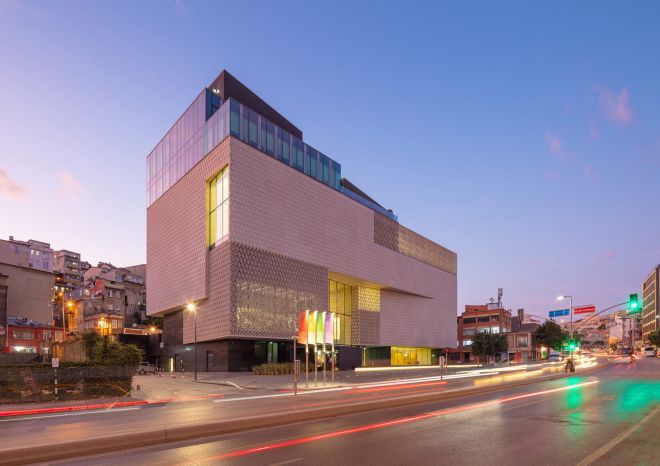
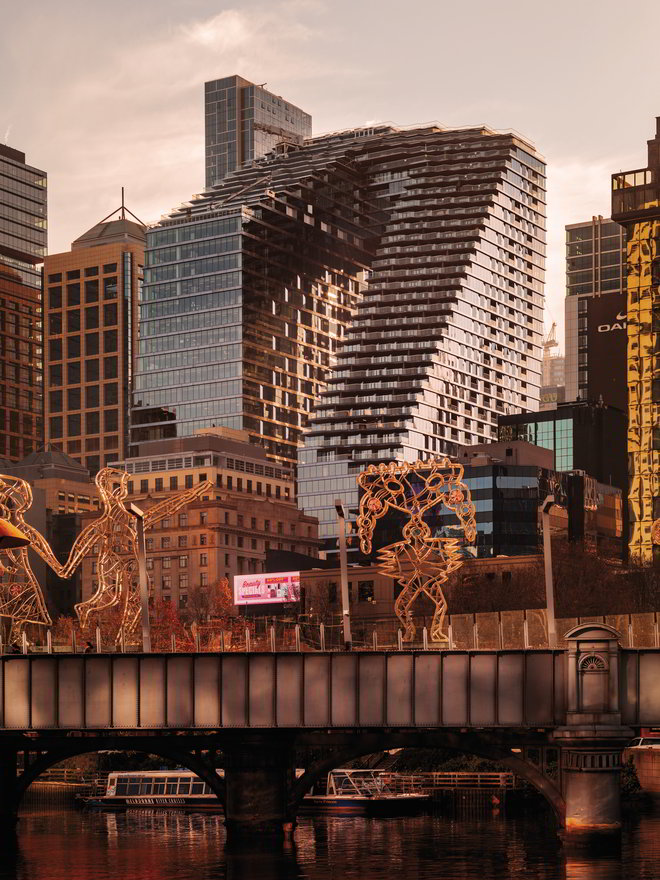
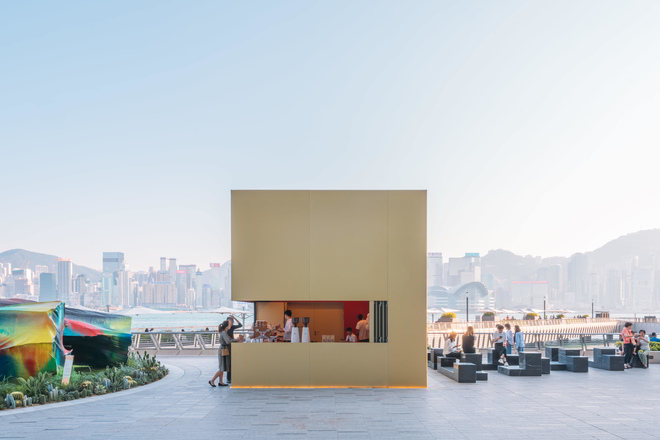
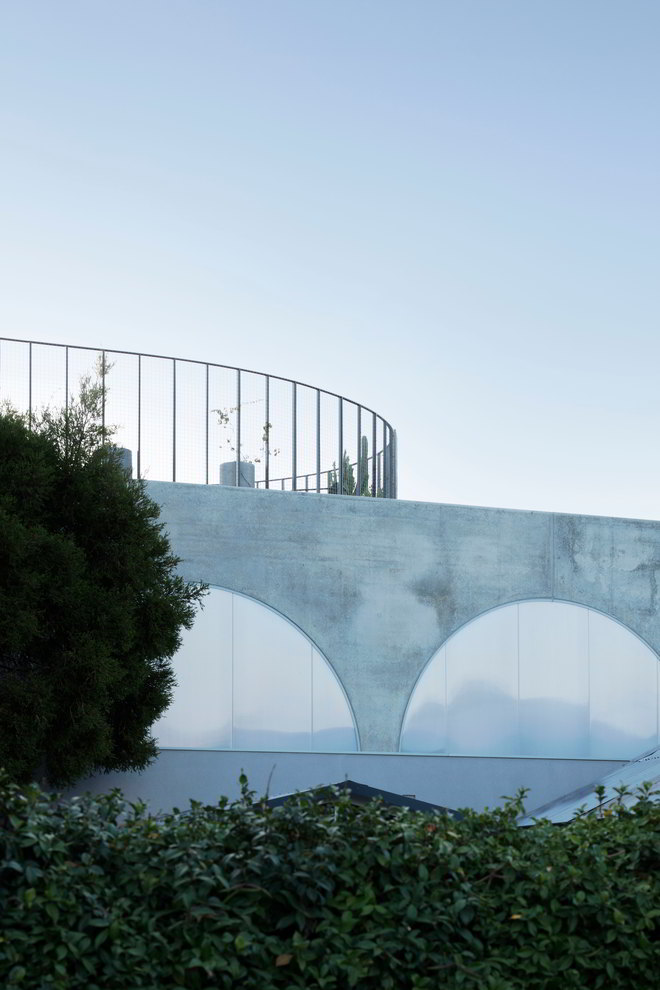

Exemplarisch eingegangen seien auf nur zwei Finalisten. Ersterer ist das neue Feuerwehr-Gebäude der FDNY Rescue Company 2. Es stammt von Studio Gang Architects, einem Büro mit Hauptsitz in Chicago. Der räumlich durchlässige Kubus steht in einem Brooklyner Stadtteil und dient als Trainingseinrichtung, die es den spezialisierten Rettungskräften des New York City Fire Department (FDNY) ermöglicht, verschiedenste Notfallsituationen rund um das Gebäude zu inszenieren und zu simulieren. Es hat ein grünes Dach und weitere umweltbewusste Züge wie eine geothermische Klimaanlage für Heizung, Lüftung und Klimatisierung (HLK-System). Ästhetisches Kennzeichen des nachhaltig durchdachten Gebäudes sind seine tiefroten Akzente: Die Außenseite ist partiell besetzt von rot glasierten Terrakottaplatten. Sie betonen Hohlräume wie Fenster und Türen – Hohlräume von Gebäuden sind für Rettungskräfte während der Noteinsätze von besonderer Bedeutung. Die warm schimmernden Elemente aus Terrakotta verbinden sich gleichsam mit der Vorstellung von Feuer und Flammen. Die Struktur der glänzenden Oberflächen kommt einer Emaillierung à la Fabergé gleich; die Flächengestaltung erinnert an die geometrisch-dekorativen Wandreliefs von Carlo Scarpa.
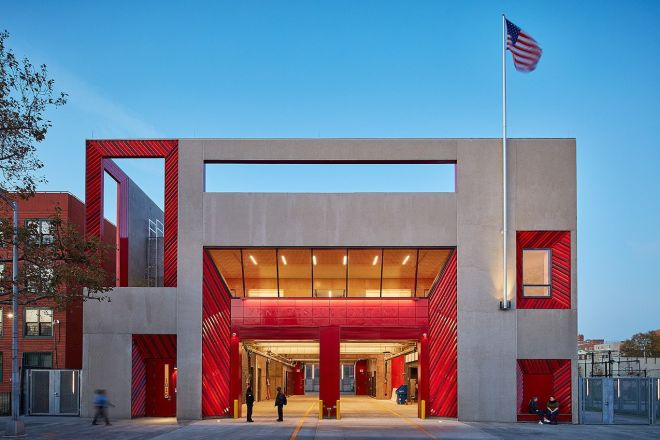
Das zweite Projekt, das kurz vorgestellt sei, ist The Wuchazi Bridge im chinesischen Wuhou. Eingereicht wurde es von Sichuan Provincial Architectural Design & Research Institute aus China. (Am Projekt mitbeteiligt sind unter anderem: Tom Wünschmann, Achim Kaufer, Wei Cai und Philipp Buschmeyer.) Die Brücke für Fußgänger und Fahrräder überquert den Fluss Jin im südlichen Teil der Hightech-Zone von Chengdu. Ihre Konstruktion aus Stahlkastenträgern und -bögen hat eine Gesamtfläche von 4180 m2 und fungiert als eine wichtige Verbindung zwischen den Unterbezirken Guixi und Zhonghe. Sie besticht vor allem durch ihre Leitidee einer Endlosschleife, die die zwei Uferränder miteinander vernäht. Die passierenden Menschen begehen eine mäandernde Skulptur und erleben dabei verschiedene Perspektiven und Szenarien zwischen Natur und Stadt. Die Brücke in der Landschaft wird – mithilfe von Plateaus und Pfaden – selbst zur Landschaft und zum Erholungsziel.
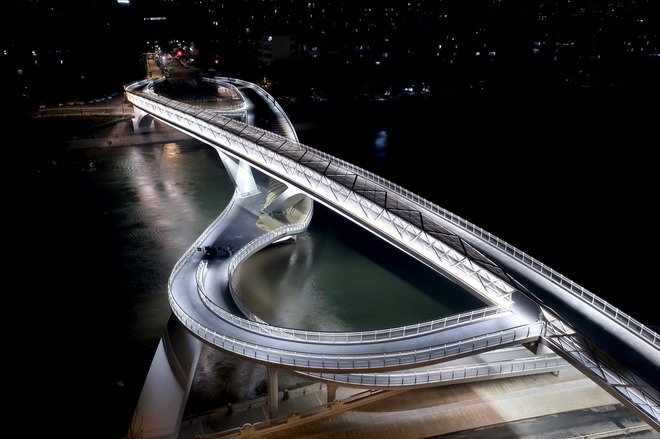
Neben den realisierten Projekten kommt beim Festival auch der Theorie-Sektor nicht zu kurz. Hierzu bietet das WAF ein reichhaltiges Konferenzprogramm. Ganz im Zeichen der Covid-19-Ära lautet der Titel: Resetting the City: Greening, Health and Urbanism. Dass die Gesundheit im Zentrum des Themen-Trios steht, kommt nicht von ungefähr; die Pandemie, die seit 2020 grassiert, appelliert an eine der Hauptaufgaben, die jede fundierte Stadtplanung seit jeher einbezieht: Hygiene und andere Belange des urbanen Wohlbefindens. Die Idee der grünen Stadt steht also in einem aktuellen Licht: Sie wird zu einer räumlichen Maßnahme der Pandemiebekämpfung. Das ist nichts Geringeres als eine wiederentdeckte und immer bedeutender werdende Dimension – neben den Faktoren wie biologische Vielfalt und Ökologie. Zu den Diskussionsinhalten gehören Konzepte für saubere Luft, die verstärkte Nutzung öffentlicher Verkehrsmittel, Wasserqualität und -versorgung sowie die Gewinnung „sauberer“ Energie als Teil von Stadtplanungsstrategien in aller Welt.
Seit der letzten WAF-Veranstaltung in Amsterdam sind drei Jahre vergangen. Die diesjährige Shortlist ist daher ein Lichtblick von besonderer Art. Unweit des Flughafens und direkt am Fluss Tajo gelegen, spiegelt der Veranstaltungsort Feira Internacional de Lisboa den Gegenstand des WAF 2021 – rund um Stadt und Umwelt – kongenial wider. Last but not least: Lissabon lässt hoffen auf die Rückkehr zum Einjahresrhythmus. Das hochkarätig besetzte Live-Format steht parat. ♦
World Architecture Festival 2021 in Lisboa
The World Architecture Festival (WAF), the most extensive international architecture award programme, will take place in Lisboa from 1 to 3 December. This year’s theme is Resetting the City: Greening, Health and Urbanism. The audience can expect pure inspiration: three days and four nights on the Tagus River with a rich offer of conferences, lectures, seminars, live reviews and awards.
The World Architecture Festival has (long-awaited) published the shortlist for 2021. It will honour around 200 buildings and landscape projects created between 2019 and 2021. The range includes diverse typologies such as commercial, residential and cultural projects. Architectural firms from 55 nations submitted 732 projects. By comparison, WAF Berlin had 42 countries and 343 projects in 2016.
The WAF is an event of superlatives. And that also includes the international jury: 154 people from over 70 countries are participating in the selection process. Some of them have already participated in the WAF events in previous years. Among them are the practising architects Francine Houben, Jeanne Gang and Eva Jiřičná. But there are also academics such as Kongjian Yu and Peter Bishop and representatives of leading professional publications – see Catherine Slessor (The Architectural Review) and Carlotta Zucchini (THE PLAN).
Despite the short duration of the event, usually held annually since 2008, the procedure and structure of its prizes are complex. It is also interesting that the shortlisted entrants – apart from the submission fee – have to overcome another hurdle: At the WAF, it is mandatory to be present. The nominees must deliver a personal presentation of their projects to the respective category jury. For this purpose, the selected offices send out two representatives. During the first two days of the festival, they will compete for one of the 33 category prizes. Having received one of the prizes, they have to face a so-called super jury again on the last day. In the final stage, one project wins the prestigious title World Building of the Year or Landscape of the Year.
Besides, there are other „Of-the-Year-titles“. Thus, interior design, small projects – and much more – are also given attention. As usual, WAF 2021 excels with several special prizes. The prizes go to projects from the primary selection. (Participation in these prizes does not require any additional fees.) The opportunity to snatch an award thus expands to the Architectural Drawing Prize, Water Research Prize, WAFX Award, the Visualisation Prize and The Architectural Photography Awards (to name but a few).
The amazingly diverse range of projects and prices is hardly manageable. Therefore, only the area of architecture is to be highlighted here. As usual, world-famous names such as OMA, Grimshaw, Foster & Partners and SHoP Architects appear. In addition, however, some offices are only beginning to draw attention outside their countries of origin. Examples are Nic Brunsdon from Perth (Australia) and the Moscow office Severin Proekt.
Only two finalists shall be mentioned by way of example. The first is the new FDNY Rescue Company 2 fire station building by Studio Gang Architects, a firm headquartered in Chicago. The spatially permeable cube stands in a Brooklyn neighbourhood and serves as a training facility that allows the New York City Fire Department’s (FDNY) specialised rescue personnel to stage and simulate a wide variety of emergencies around the building. It has a green roof and other environmentally conscious features such as a geothermal air conditioning system for heating, ventilation and air conditioning (HVAC system). Aesthetic features of the sustainably designed building are its deep-red accents: The exterior is partially covered with red-glazed terracotta tiles. They emphasise voids such as windows and doors – voids of buildings are of particular importance for rescue forces during emergency operations). The warmly shimmering elements of the terracotta combine, as it were, with the idea of fire and flames. The structure of the shiny surfaces resembles enamelling à la Fabergé; the surface design is reminiscent of the geometric-decorative wall reliefs by Carlo Scarpa.
The second project to be briefly discussed is The Wuchazi Bridge in Wuhou, China. It was submitted by Sichuan Provincial Architectural Design & Research Institute from China. (Participants in the project include: Tom Wünschmann, Achim Kaufer, Wei Cai and Philipp Buschmeyer). The bridge for pedestrians and bicycles spans the Jin River in the southern part of Chengdu’s high-tech zone. Its construction of steel box girders and arches covers a total area of 4180 m2 and functions as a significant link between the sub-districts of Guixi and Zhonghe. Its main appeal lies in its guiding idea of an endless loop that stitches the two river banks together. People passing by enter a meandering sculpture and experience different perspectives and scenarios between nature and the city. The bridge, standing in the landscape, becomes – with the help of plateaus and paths – a landscape in itself and a recreational destination.
In addition to the realised projects, the theory sector does not miss out on the festival. The WAF offers a rich conference programme. In the spirit of the Covid 19 era, the title is: Resetting the City: Greening, Health and Urbanism. The fact that health is at the centre of the trio of themes is no coincidence; the pandemic that has been rampant since 2020 appeals to one of the main tasks that any sound urban planning has always considered: Hygiene and other concerns of urban well-being. So the idea of the green city is highly topical: it becomes a spatial measure of pandemic control. This is nothing less than a rediscovered and increasingly important dimension – alongside factors such as biodiversity and ecology. The content of the discussion includes concepts for clean air, increased use of public transport, water quality and supply, and the generation of „clean“ energy as part of urban planning strategies around the world.
Three years have passed since the last WAF event in Amsterdam. Therefore, this year’s shortlist is a bright spot of a particular kind. Located not far from the airport and directly on the Tagus River, the Feira Internacional de Lisboa venue congenially reflects the subject matter of WAF 2021 – all about the city and the environment. Last but not least: Lisboa gives hope for a return to the one-year rhythm. The top-class live format is ready and waiting.
TRANSLATION BY ÖZLEM ÖZDEMIR



